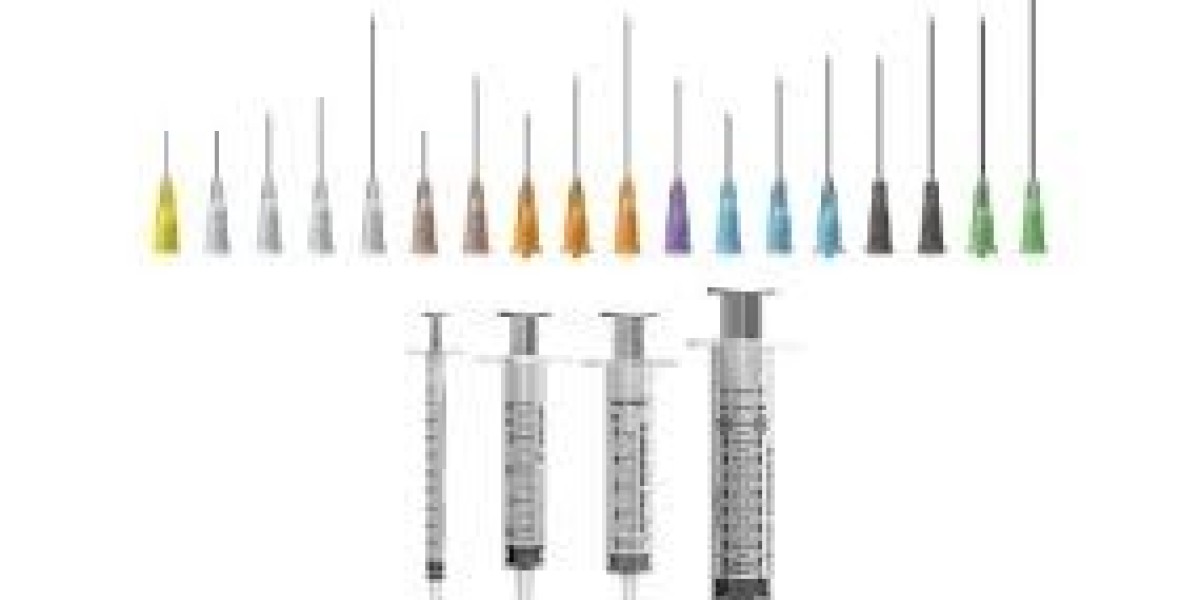The global syringes and needles market is poised for significant growth, driven by advances in medical technology, increasing healthcare demands, and rising chronic disease prevalence. Syringes and needles play a critical role in the administration of medications, vaccines, and other injections, and as healthcare practices evolve, so too do the technologies that power these instruments. This article delves into the latest trends, innovations, and long-term growth opportunities in the syringes and needles market, exploring how these advancements will shape the future of healthcare.
Emerging Trends:
Needle-Free Injections: One of the most significant trends shaping the syringes and needles market is the rise of needle-free injection systems. These devices use pressure to deliver medication through the skin, eliminating the need for needles. This innovation addresses common concerns such as needle phobia, pain, and the risk of needlestick injuries. Needle-free technology is increasingly being used in areas such as insulin delivery, vaccines, and even for pain management.
Smart Syringes: As part of the digital health revolution, smart syringes are transforming how injections are administered. These syringes come equipped with sensors and connectivity features that allow for real-time data collection, such as injection timing, dosage, and location. The data can be transferred to mobile apps or healthcare providers for monitoring and analysis, ensuring better patient compliance and safety. This innovation is expected to enhance the accuracy and effectiveness of drug delivery, especially for chronic conditions.
Self-Injection Devices: With the rise of home-based healthcare and personalized medicine, self-injection devices are becoming increasingly popular. These devices allow patients to administer their own medication, offering greater convenience and reducing the need for hospital visits. The self-injection trend is particularly prevalent in the treatment of chronic diseases such as diabetes, rheumatoid arthritis, and multiple sclerosis, where long-term therapy is required.
Eco-friendly Syringes and Needles: As sustainability becomes a priority across industries, the demand for eco-friendly medical devices is on the rise. In the syringes and needles market, manufacturers are focusing on creating environmentally friendly products by using biodegradable or recyclable materials. This is in response to concerns about the environmental impact of medical waste, which has grown significantly over the years.
Advancements in Vaccine Delivery: With the increasing global focus on vaccination programs, especially in response to the COVID-19 pandemic, syringe and needle manufacturers are investing in innovations that improve vaccine delivery. High-quality, low-cost, and easy-to-use syringes and needles are essential for mass immunization campaigns. Additionally, research is underway to develop syringes that minimize vaccine wastage, ensure better dose accuracy, and enhance patient comfort during administration.
Innovations in Syringe and Needle Design:
Prefilled Syringes: Prefilled syringes have revolutionized the market by offering a more efficient and safer way to administer medications. These syringes are preloaded with the exact dose, reducing the risk of dosage errors and contamination. Prefilled syringes are widely used in the administration of biologics, vaccines, and other injectable drugs, and their convenience and safety features continue to drive their adoption in healthcare settings.
Needles with Safety Features: The introduction of safety-engineered needles has been a game-changer in preventing needlestick injuries and the spread of infections. These needles are designed with features such as retractable mechanisms or shields that cover the needle after use. As healthcare providers and patients alike prioritize safety, demand for these innovative needles continues to rise.
Innovative Materials and Coatings: Manufacturers are continually improving the materials used in syringes and needles to enhance performance and patient comfort. For instance, the use of advanced coatings like silicone or hydrophobic materials can reduce friction, making injections less painful and more comfortable. Biocompatible materials that minimize allergic reactions are also gaining popularity, especially for patients with sensitivities to traditional materials.
Long-Term Growth Opportunities:
Growing Demand in Emerging Markets: As healthcare systems in emerging economies continue to expand, the demand for syringes and needles is expected to rise significantly. Population growth, increasing healthcare access, and a higher incidence of chronic diseases in these regions will drive the need for more efficient injection devices.
Increased Focus on Home Healthcare: The trend toward home healthcare is expected to contribute to long-term growth in the syringes and needles market. With patients increasingly seeking to manage their own care, the demand for easy-to-use, portable, and self-administered injection devices will continue to grow.
Aging Population and Chronic Disease Management: The global aging population is another key driver for the syringes and needles market. Older adults are more likely to have chronic conditions such as diabetes, arthritis, and cardiovascular diseases, which often require long-term injection therapies. This demographic shift presents a major opportunity for the market to develop specialized products catering to the needs of elderly patients.
Increased Investment in Medical Research and Development: The constant pursuit of innovation in medical technology will lead to the development of even more advanced syringes and needles. As new treatments for various diseases are discovered, the demand for specialized injection devices will continue to grow, presenting significant opportunities for manufacturers to lead in product innovation and development.
In conclusion, the syringes and needles market is experiencing rapid innovation, driven by emerging trends like needle-free injection systems, smart syringes, and eco-friendly products. As healthcare evolves to meet the needs of a growing and aging population, these innovations will play a crucial role in shaping the future of drug delivery and patient care.



